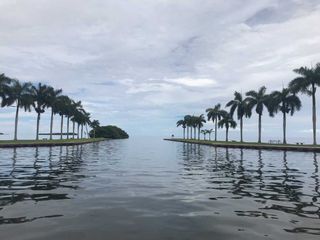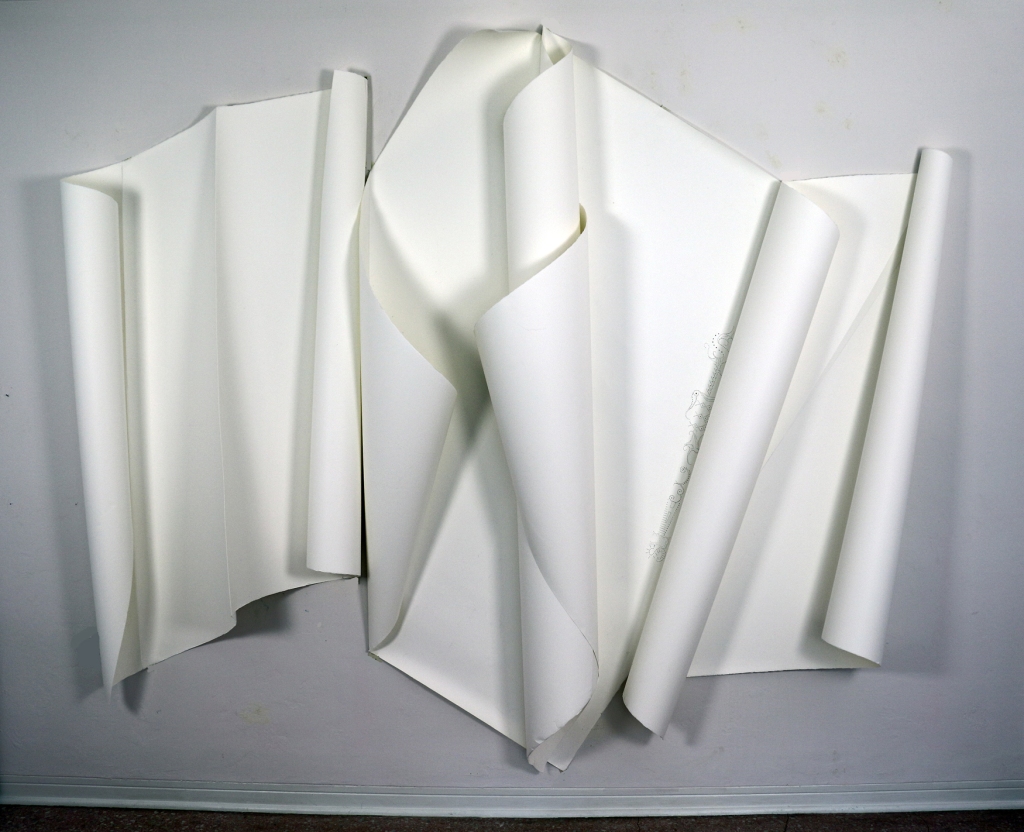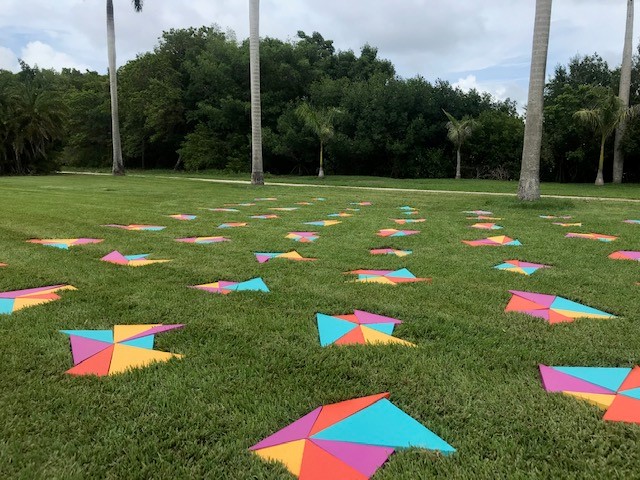Deering Estate
STUDENT BIO

My name is Daniela Canizares. I am an Honor College student at Florida International University. This is my second year at this university and the first one at the Honors College. I was born in Cuba and came to Miami when I was 15 years old. I have lived in Miami ever since.
GEOGRAPHY
The Deering Estate is located at Palmetto Bay at 16701 SW 72nd Ave, Miami, FL 33157. One of the main objectives of the Deering Estate is to preserve nature and its surroundings. They have a specialized team in charge of removing species that were not endemic to the place. They go into the forest at the property and take off the species that were not there from the beginning to try to preserve the place as it was from its beginnings a couple of years ago. This place is located near the bay, which contributes to the protection of species such as manatees. Its location is unique, and so is the flow of its waters.

HISTORY
The history of this place is also unique and appealing to the ear of the visitors. It dates back to the XX century when Miami was just at its beginning. Before Mr. Charles Deering bought the place, it was populated by Afro Bahamians and Afro Americans, who were the ones helping to build the place from scratch later on. This process happened through segregation times in America and the pictures documenting this showed the terrible conditions to which the Afro Bahamians and Afro Americans were put through.

This institution has two main residences: The Stone House and The Richmond Cottage. Mr. Deering first bought The Richmond Cottage and then started building on The Stone House. The Stone House served as Mr. And Mrs. Deering’s main residence. Its walls thickness is between 14 to 16 inches each. This structure makes the Stone House a safe place. The rooms at the Stone House are built in such a way that in case one of the rooms in the house ever catches fire, they could close the doors and contain the fire on it, making the rest of the house safe and keeping the house’s value. Something that catches the attention of the visitants are the engravings outside the house. These engravings symbolize everything the Afro Americans and Afro Bahamians saw when they were constructing the house. The figures range from seahorses to endemic plants and flowers, such as palm trees. The ceiling on the outside has a mosaic made up of everything they could find around the house. It has shells, algae, and rocks from around the house. If someone has the opportunity of getting on the rooftop, they would experience something unique about The Stone House. On the rooftop, you can see tiles with specific engravings. These engravings were unique to each worker as a way to prove their work and get paid for it. In the house architecture we see a mix of old-world art, especially Islamic art, and modern techniques, creating a unique mix, which at the time was seemed like something crazy and completely out of context, but nowadays is part of the uniqueness Miami has to bring to its people.
On the other side, connected by a hallway with no walls, we find The Richmond Cottage. The Richmond Cottage was first used as an inn and then as a winter house. This house is considered one of the oldest wooden houses in Miami Dade County, even though after the pass of Hurricane Andrew it had to go under reconstruction. After this tragic moment, constructors tried to keep it as similar to the original one as possible. Once you get inside The Richmond Cottage, there is a contrast between what you knew and what you had read from books. The rooms at The Richmond Cottage are smaller than a room people will usually see at an inn nowadays. The dimensions are incredibly different from what people are used to seeing in Miami. On the other hand, the kitchen is relatively large compared to the rest of the place. As of right now, it is decorated to simulate the time it was constructed (XX Century). It has some decorative food and mannequins with dresses like the ones the maids used to use back in those days.

If you walk a couple of miles away from the houses, you will find yourself walking through the Chinese bridge. Mr. Deering had a love for Chinese culture, and he wanted to have a little of it in his property, the reason why between all the other cultures, we suddenly see a part of Asia mixed in as well. The natural reserve on the property is preserved in its original condition as it was years ago when Mr. Deering purchased the property.
MISSION
The mission of The Deering Estate is to preserve a part of Miami that people do not see daily, neither know of it. It supports education and research through the funds they raise as an institution. They try to keep the history of the place alive as well as protecting the species natural from this unique ecosystem.
ACCESS
Deering Estate is accessible to everybody who wants to learn about the untold story of an important part of Miami.
- Open every day (except for Christmas and Thanksgiving)
- Open from 10 AM to 5 PM (no admissions after 4 PM).
- General admission tickets for adults (15 years old and up) – $15
- General admission tickets for youth (4-14 years old) – $7
- General admission tickets for children (3 years old and under) – free
- General admission tickets for seniors (65 years old and up), active-duty military, and honorably discharged veterans – $2.00 off on Tuesdays
By becoming a Deering Estate Foundation Member, people get in for free, and a university student membership costs $15 a year.
COLLECTIONS
Relating to the Arts and the rising artists, Deering Estate provides Artists-in-Residence programs where artists can go and work on their pieces. They also offer historic exhibitions as well as concerts. In the list of the Artists-in-Residence, we find Professor John W. Bailly, Alfredo Brito, Amalia Caputo, among other recognized artists.
EXHIBITIONS
In the current exhibitions hosted by the Deering Estate, we find “Exhibit” by Rosemarie Chiarlone. This exhibition is going to be hosted from October 26, 2020, to January 31, 2021. The price for non-members can range from $7-15. This exhibition is about the environment and what people can do to preserve their surroundings.

Another Exhibition taking place at the Deering Estate is “Spring Contemporary”. This exhibition will be open from October 29th to December 21st, 2020. This exhibition features multiple artists throughout the exhibition.

Another interesting exhibition taking place at the Deering Estate is the “Historic Holiday Décor: Vintage Florida”. This event will be taking place from November 27th to January 8th, 2021. The price for the entrance ranges from $7-$15. During this event visitors can walk through the Deering Estate while it is decorated to have an idea of how it used to be back in the days when it was Mr and Mrs Deering’s residence.

SPECIAL PROGRAMS
Deering Estate has also a long list of special and recurrent programs. One of these programs is Wildlife Conservation. This program is for students from ages 9 to 14. The price for this class is $45. The purpose of this program is to educate the students about the ecosystem and biology of the surroundings. Eco Academy is another program happening at Deering Estate. It costs $15 and happens every first Wednesday of every month. It is mainly directed at children from ages 5 to 8 and their parents. Classes will also explore the wildlife and educate them about the ecosystem around Deering Estate. Photography is an important event at Deering Estate. It offers two different programs: Sunrise Photography and Nature Photography. The cost for Sunrise Photography is $20 and includes admission on regular hours during that day. The cost for Nature Photography is $25 and it includes a naturalist that will guide the people around the Estate and teach them ecological techniques and the environment around them. This program is only accepting people of ages 9 and up.
VISITOR
Interview with Daniela Medina, a student at Miami-Dade College
Is this your first time visiting the Deering Estate?
Yes. Even though I live nearby and knew about it, I had never actually been here before.
Before entering, did you have an idea of how the place was going to be?
Yes, kind of. Even though I have never been personally inside, I had seen it in wedding pictures on Instagram.
What was the main thing calling your attention from the Deering Estate?
How different it was from the rest of Miami. You don’t expect to see this type of architecture so near your typical Miamian house. The view the houses have to the Bay is something I would love to wake up to every day.
Was there something you did not like about it?
I actually felt like the admission tickets are a little overpriced for what the place actually is, especially right now that we are in COVID times and there are is not as much activity as they used to promote on their Instagram before COVID.
Would you think of coming back?
Yes and no
Do you mind elaborating on your previous answer?
Yes, I would love to come back, especially right now that we have nice weather in Miami and the place seems like a great getaway for a picnic or to take some shots to post on social media. But at the same time, no. I do not feel like the price makes justice as of right now. Maybe in the future when things completely open again I would consider changing my mind about it.
PORTRAIT
Interview with Jennifer Quintero, a worker at Deering Estate
When and how did you hear about the opportunity for working here?
I heard about the position at Deering around May. I didn’t know it was for Deering, just that it was an education position on the county website. I really needed a job since my job on campus was on hold for the summer. I didn’t get a call until like July, since the government takes a long time to process that stuff.
Did you ever see yourself working at Deering Estate?
I never saw myself working at Deering because I didn’t even know it existed. It’s honestly the biggest blessing I’ve ever received as it’s directly in my major and field.
What’s the best and the worst part of it?
The best part of working there has definitely been the amount of knowledge I’ve gained about what it means to be in the environmental sector as an educator. It’s more unconventional forms of teaching, but I honestly think they’re the most effective. Kids remember visiting the Deering Estate long after they’re gone. You get to see them learn and develop a love for the environment. The worst part is the mosquitos haha
How has covid affected (good or bad) Deering estate?
Covid has definitely affected Deering, since schools are remote, lots of our programming has been reduced. We’ve adapted really well though, in my opinion, we’re providing new and innovative ways to have virtual field trips. I’m honestly impressed with my teams ability to remain creative during this pandemic, I hope to learn more from all of them.
SUMMARY
Usually when people hear about Miami think of this multicultural place where everyone seems to know the history of their city. However, going and visiting the Deering Estate could not prove me more wrong about this. There are parts of history that are in front of our eyes, but we barely see them.
One of the best things I take with me out of this experience at Deering Estate is the people working there. They make the trip such a nice experience. If you have any questions, you can always turn to one of them and they will most likely give you an answer to it, or look for someone who has the answer in the best way possible.
Something that did not work was Miami’s weather. Miami’s tropical weather attracts many insects and Deering Estate is a habitat for many of them. I am not an insect person and just having them around me, made me focus on the insects instead of the beauty of the nature around me.
Overall it was a great experience and made me learn more about my adoptive city. It is definitely a recommended experience.
CITATIONS
“Miami Art Exhibits: Miami Art Events at Deering Estate.” Deering Estate, deeringestate.org/events/category/miami-art-exhibits/.
“Plan Your Visit.” Deering Estate, 9 Dec. 2020, deeringestate.org/plan-your-visit/.